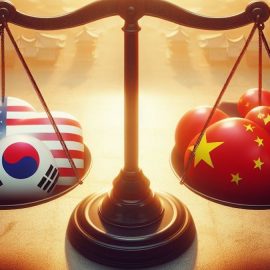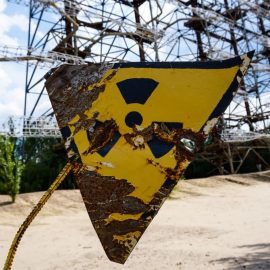

This article is an excerpt from the Shortform book guide to "The Anarchy" by William Dalrymple. Shortform has the world's best summaries and analyses of books you should be reading.
Like this article? Sign up for a free trial here.
Who won the Anglo-Mysore wars? What impact did the wars have on India?
After the East India Company (EIC) established itself in Bengal, it began to assert itself on the larger stage of regional powers vying for control of the greater Indian subcontinent. The EIC rose to power in greater India through a series of wars against two major powers: the Mysore Sultanate and the Maratha Confederacy.
Let’s take a look at a brief history of the Anglo-Mysore wars.
The Anglo-Mysore Wars (1767-1799)
The Anglo-Mysore wars were a series of conflicts between the British East India Company (EIC) and the Mysore Sultanate, leading to a dramatic expansion of the EIC’s territory and resources. Historian William Dalrymple clarifies that the Mysore Sultanate was a powerful kingdom based in southern peninsular India and ruled during the late 18th century first by Hyder Ali and then by his son Tipu Sultan. The Mysore Kingdom commanded significant resources. It possessed superior numbers of troops and had narrowed the gap in military technology and tactics with assistance from French mercenaries. Additionally, the Kingdom had built its own munitions factories and artillery, funded by a strong silk-based economy. Lastly, Mysore had forged effective alliances, first with the Marathas and a central kingdom called Hyderabad and then later with the French.
| History of the Mysore Kingdom By the time of its wars with the British, the Kingdom of Mysore already had an impressive track record of navigating the region’s imperial politics. Founded in 1399 at the site of the modern-day city of Mysore, this kingdom served as a vassal state to the Vijayanagara Empire—a mostly Hindu empire based in Southern India (1366-1646). As a vassal state, it provided military support and financial tribute in return for security from the Empire, but lacked the autonomy of a fully sovereign state. However, Mysore expanded its power and independence after the defeat of the Vijayanagara Empire at the hands of the Deccan Sultanates (an alliance of Muslim Kingdoms independent from the Mughals) in 1565. Mysore maintained its independence by fighting against the Mughals and Marathas throughout the 17th century. However, under the emperor Aurangzeb, the Mughals eventually broke through and subordinated Mysore to Mughal leadership in the 1690s. Nonetheless, Mysore maintained a degree of political and cultural independence. Its subordination consisted purely of paying financial tribute to Delhi. However, it was able to resist even this arrangement. The Mughal empire’s grip on Southern India was loose enough that Mysore could get away with delaying payment or paying only partial sums. Like the EIC, Mysore rose in military and economic might after the collapse of the Mughal empire. The kingdom was at the height of its power when fighting the British. |
The Course and Outcome of the Wars
At first, Mysore succeeded at challenging British power in southern and eastern India, but Dalrymple explains that the war turned against it. The EIC suffered its first major defeat in India when Mysore marched on Bengal with 50,000 troops. Failing to repel the attack, the British bought off Mysore with an enormous tribute. However, over the next 30 years, under the commands of Warren Hastings, George Cornwallis, and eventually Richard Wellesley, the British took several steps which allowed them to overcome the Mysore Sultanate and conquer its territory:
- First, the company broke Mysore’s alliance by signing its own treaty with Mysore’s Maratha allies.
- Then it led a successful counteroffensive into Mysore territory. Tipu Sultan surrendered and Cornwallis extracted severe concessions, including 30 million rupees, half of Mysore’s territory, and two of Tipu’s sons as collateral.
- Next, the EIC neutralized Mysore’s French allies by stealthily surrounding their primary army with artillery and demanding a surrender.
- Finally, the EIC led a decisive campaign to conquer the other half of Mysore territory, overwhelming the capital of Srirangapatnam with artillery and killing Tipu Sultan in battle.
This victory led to a vast expansion of the EIC’s power. The company’s territory more than doubled and it appropriated much of the Sultanate’s wealth. Furthermore, it assimilated troops from Tipu’s former armies into its own, growing its total forces to over 155,000 troops, a greater force than the entire military of Britain.
| What Happened to Mysore Under British Rule? Dalrymple’s analysis of the Anglo-Mysore wars focuses on how these conflicts contributed to the EIC’s rise to power in India. By exploring the war’s wider impacts on Mysore itself, we can contextualize the character of the British rule that was to come. After Tipu’s defeat, Britain reinstated the Wodeyars—an ancestral dynasty of Mysore royals—as the nominal rulers of Mysore. The kingdom was made a “princely state” of the British Empire in India. This designation meant that the British did not directly administer Mysore’s government, but Mysore’s nominal rulers were still required to pay Britain tribute, house British armed forces, and defer to British officials on important policy decisions. This was a common arrangement under British rule in India that eventually included 565 “princely states.” The British revoked Mysore’s princely state status in 1831 when, disappointed by Mysore’s economic performance, they accused local officials of corruption. Britain assumed administrative control of Mysore for roughly the next 50 years. In the late 1870s, another devastating famine hit, killing nearly one-fifth of the population (700,000 to 1,100,000 people). The Wodeyars petitioned for the restoration of their administrative authority and princely state status. Britain approved the petition in 1881, and Mysore remained a princely state until Indian independence in 1947. |

———End of Preview———
Like what you just read? Read the rest of the world's best book summary and analysis of William Dalrymple's "The Anarchy" at Shortform.
Here's what you'll find in our full The Anarchy summary:
- How the English East India Company grew during the 17th and 18th centuries
- Why a trading company came to rule most of the Indian subcontinent
- The background, historical context, and fallout from the events in the book






